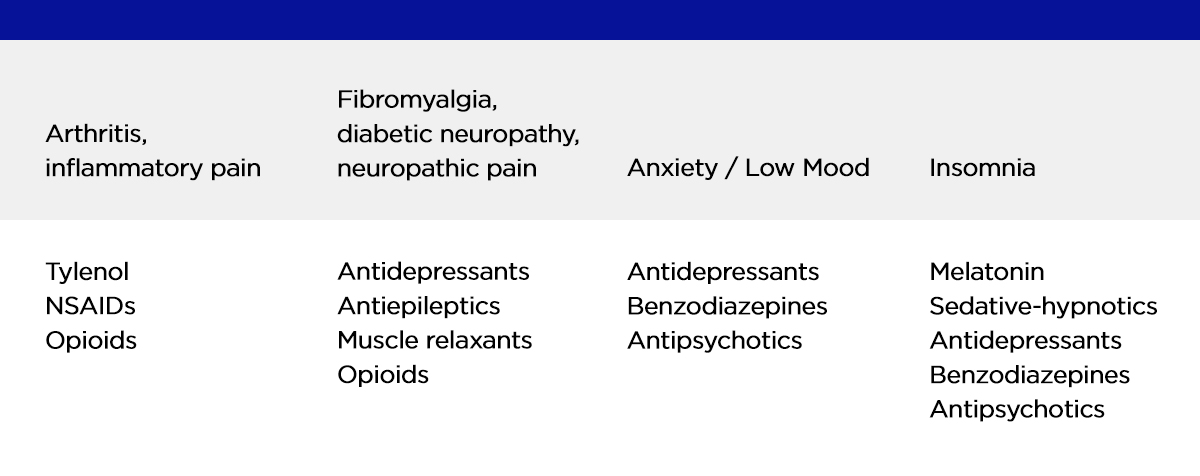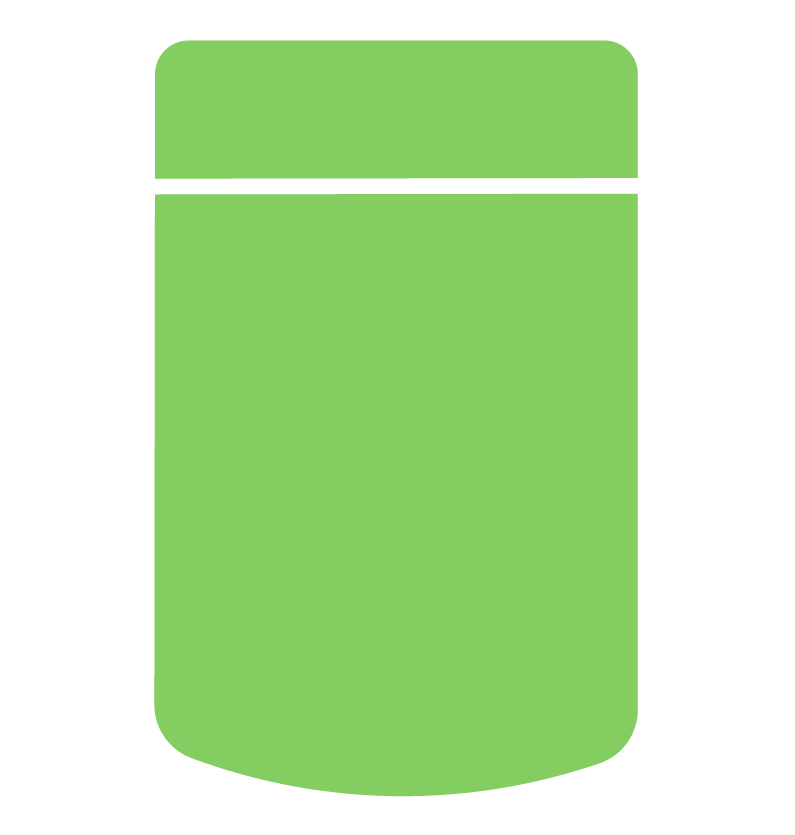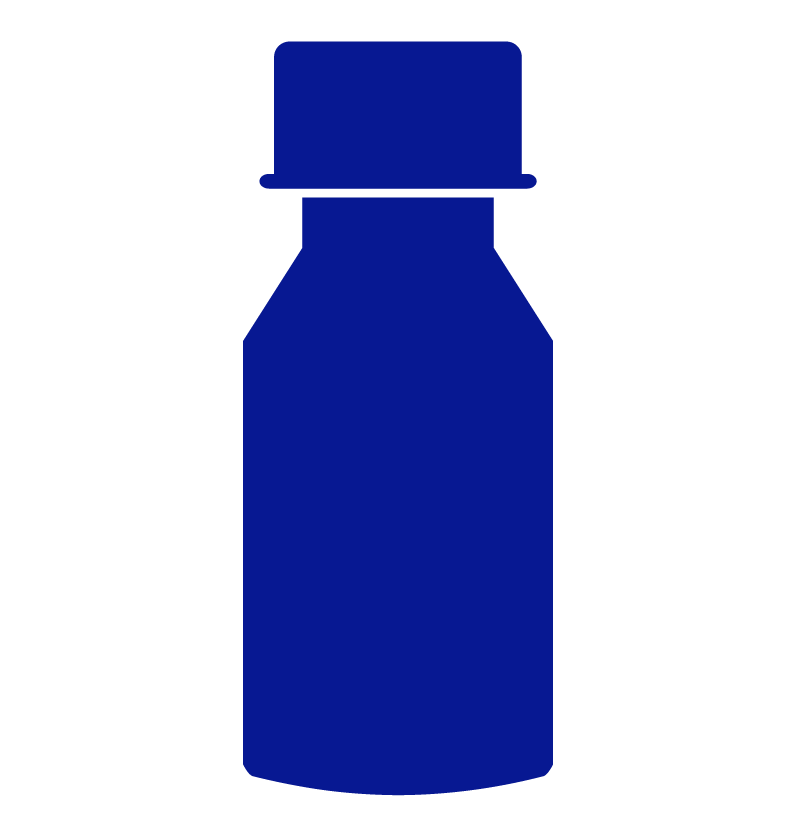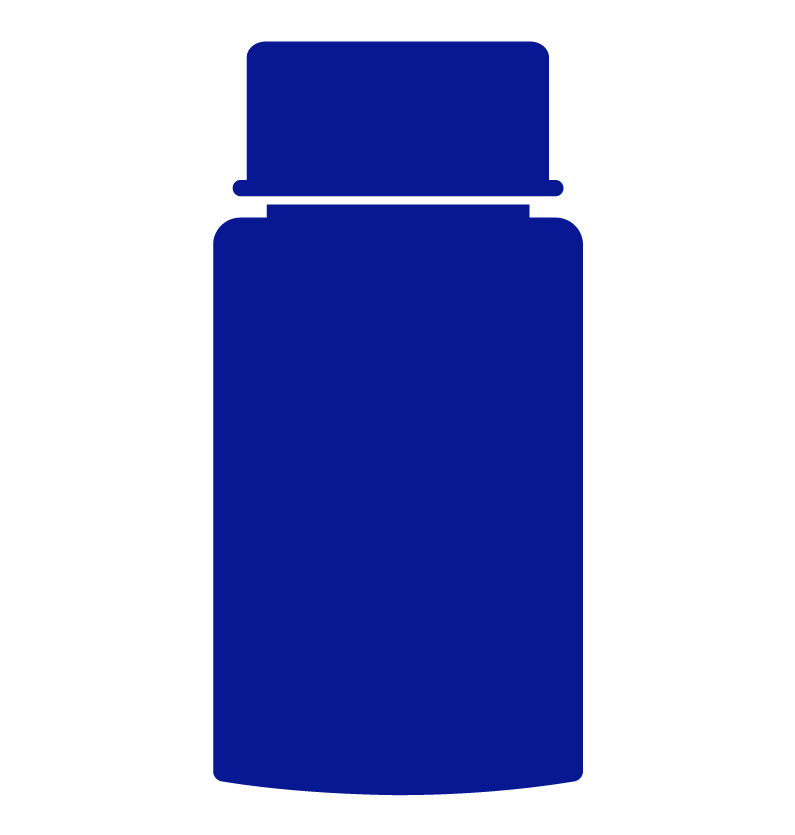Chronic pain is best treated through multi-modal therapies including physical therapies, psychotherapy, spiritual care, lifestyle management, and interventional therapies.
Start by setting goals that are SMART (specific, measurable, action oriented, realistic, and time-based). For example, “I want to reduce my pain from an 8/10 to a 6/10 so I can walk the dog around the block within 4 weeks after starting treatment”.
The drug classes that correlate to the three pillars of the pain triangle – Chronic Pain, Insomnia and Stress are listed below. Medical cannabis is a promising alternative for all, and it is likely to avoid the negative side effects associated with these drugs, particularly opioids.






